An Introduction to U.S. Immigration Law, Part 4:
Employment and Business-Based Options
This is the fourth part in our Series: An Introduction to U.S. Immigration Law. In Part 1, we talked about the distinction between immigration status and a visa. In Part 2, we talked about the distinction between immigrant and non-immigrant status. In Part 3, we talked about the family-based immigration process. Today, we’re going to talk about another major component of U.S. immigration law: employment and business-based immigration.
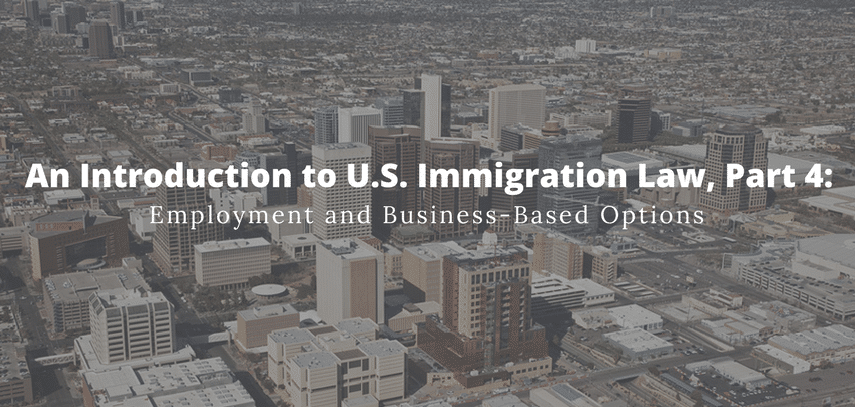
Unlike family-based immigration, which is primarily intended as a pathway to permanent residency, the business and employment based immigration options include a wide variety of both immigrant and non-immigrant visas and statuses. Each program is unique and would be impossible to describe fully in a single blog post. What we’ve compiled here is a brief summary of some of the most common visa categories:
Non-Immigrant Options
As described in more detail Part 2 of this series, there are several key distinctions between immigrant and non-immigrant visa status. The key distinction is the temporary nature of all non-immigrant options.
Among the various non-immigrant options, many programs require a petition by a sponsoring employer, while others allow a foreign national to “self-petition” and obtain a visa on his or her own. Most non-immigrant categories include visa options for dependents (spouse and/or children), but only some programs provide employment authorization for those dependents. When planning for a non-immigrant visa, it is important to talk to an experienced immigration attorney about these specific issues.
It’s worth reiterating that the following list is not a complete list of all non-immigrant visas and their requirements, but is intended as a basic overview of some of the most common business or employment-based options for non-immigrants:
B-1 (Business Visitor): Technically the B1 classification is for business visitors and the B2 classification is intended for tourists. However, in most cases a combination B1/B2 visa is issued to those seeking either of these categories. B1 status is intended for those engaging in commercial transactions, but not those engaged in gainful employment. It is also not appropriate for business activity that involves the full-time management of a U.S. enterprise. B1 status may be appropriate in the beginning stages of your job search or new venture, but you should be very careful not to violate the terms of your status while pursuing business interests on a B1/B2 visa.
E-1 (Treaty Traders): E-1 status intended for those who will carry out “substantial” trade between the United States and another country that has enacted a qualifying treat with the United States (the “treaty country”). Additionally, E1 status is only available to foreign nationals from who themselves are citizens of the above-referenced “treaty country.” The U.S. Department of State maintains a list of all these countries.
E-2 (Treaty Investors): E-2 status is reserved for those who have made a “substantial” investment in the United States. Similar to the E-1 visa, the E-2 visa is only available to those from countries with whom the United States has a qualifying treaty.
H-1B (Specialty Occupations): The H-1B visa program is intended for those in specialty occupations—which generally requires the attainment of a bachelor’s degree or higher (or its equivalent) and a job offer that requires the theoretical and practical application of that training.
An important note about the H-1B visa program is that there are only 65,000 available visas every year, and the government receives far more applications than it can approve. In response to this problem, there is a very short time period within which to apply each year, and all applications are put through a lottery system where only a percentage of the applications will even be reviewed by an adjudicator.
Another important note: Individuals from Chile, Singapore, and/or Australia may be able to qualify for very similar visas that are not subject to the same cap.
H-2B (Skilled/Unskilled Workers): The H-2B program is intended for temporary workers who are coming to the United States to fill positions for which there are not enough U.S. workers.
An employer seeking to petition for employees under the H-2B visa program must undergo a process known as “labor certification” which requires working with the U.S. Department of Labor to certify that no U.S. workers are available to fill the applicable position.
H-3 (Trainees): This program is intended for temporary workers who have been invited by an individual or organization for purposes of receiving instruction and training. One key requirement of this program is that the training program must be unavailable in the foreign nation’s home country.
L (International Transferees): L-1 status is intended for managers, executives, and those with specialized knowledge of their employer’s business who are being transferred by from a foreign office or location to a U.S. location within the same organization (or closely related organization).
O (Extraordinary Ability): The O visa program is intended for those who have “extraordinary ability in the sciences, arts, education, business, or athletics which have been demonstrated by sustained national or international acclaim or who have a demonstrated record of extraordinary achievement in the motion picture or television industry.” These visas are available for those who can document their achievements and show that they are among the very best in their field. (O visas are also made available for those who are travelling to the United States to assist a qualifying artiest or athlete for a specific event.)
TN (Treaty NAFTA): TN status is available under the North Atlantic Free Trade Association (NAFTA) treaty between the United States, Canada, and Mexico. Professional workers from Canada and Mexico can obtain a visa and/or legal status allowing them to seek temporary employment in the United States.
OPT (Optional Practical Training): While this isn’t actually a separate visa program, it is special status that is reserved for those who entered with an F1 visa or otherwise studied in the United States with F-1 status. It does provide work authorization and can be helpful step in the process of obtaining another status.
Immigrant Options
In addition to the non-immigrant categories described above, there are also a number of categories of individuals that can obtain permanent resident status through an employment or business-based application.
Like the family-based immigrant visa options we talked about previously, the employment- and business-based visa options are separated into various preference categories. Due to the numerical limitations on each the total number of employment-based immigrants, and the large numbers of applications received each year, there can be significant backlogs for those seeking to immigrate to the United States under these preference categories. The Visa Bulletin described in Part 3 of this series also applies to these preference categories.
The first 3 preference categories require varying levels of education or training. Generally these visas require a U.S. employer to sponsor the foreign worker and show that there is an offer of full-time employment in the United States. In most cases, the U.S. Department of Labor must also certify that U.S. workers are unavailable to fill the position. (This process, known as “Labor Certification” is time consuming and complex, but the details are outside the scope of this series). Additionally, the foreign workers must meet the minimum requirements for the job and the employer must demonstrate that it is able to pay the required salary.
The fourth and fifth preference categories are available to individuals in a variety of circumstances.
The fourth preference category is reserved for “Special Immigrants” which include religious workers, broadcasters, international employees of the U.S. government; employees of international organizations, armed forces members, Panama Canal Zone Employees, Certain Physicians, Afghan and Iraqi Translators; and Afghan an Iraqi nationals who provided faith services in Support of U.S. operations).
The fifth preference category is reserved for investors seeking the EB-5 visa. Generally, these investors must invest a minimum of $1 million in a new commercial enterprise (or $500,000, if the investment is in a quailed “Targeted Employment Area” that is either rural in nature or experiencing high unemployment rates). Additionally, the investor’s new commercial enterprise must create at least 10 new full time jobs.
The criteria for each preference category can be extraordinarily complex, and the application process is often very time-consuming. For this reason, many individuals who will eventually apply for an employment-based immigrant visa initially apply for a non-immigrant visa. These non-immigrant visas can sometimes allow for temporary status and work authorization in the United States while the immigrant petition is prepared, submitted, and processed.
If you have specific questions or concerns about the employment- or business-based immigration process, or about other aspects of the immigration law, please contact the Mesa immigration attorneys at the Gunderson Law Group, P.C.. We serve clients in Mesa, Phoenix, Tempe, Chandler, Gilbert, Scottsdale, as well as clients throughout the state of Arizona and throughout the world.
Written By:
Arizona Location
1839 S Alma School Rd #275
Mesa, AZ 85210
Office: (480) 750-7337
Email: Contact@GundersonLawGroup.com
Nevada Location
3960 Howard Hughes Parkway #500-A
Las Vegas, NV 89169
Office: 702-990-3515
Email: Contact@GundersonLawGroup.com

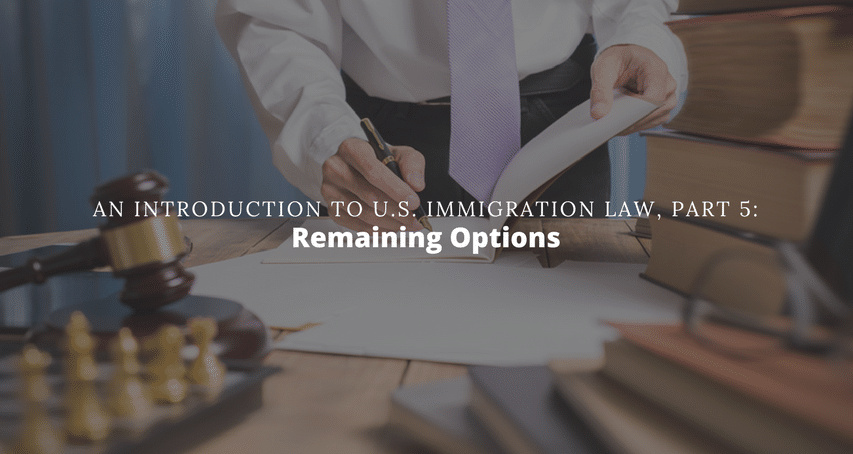
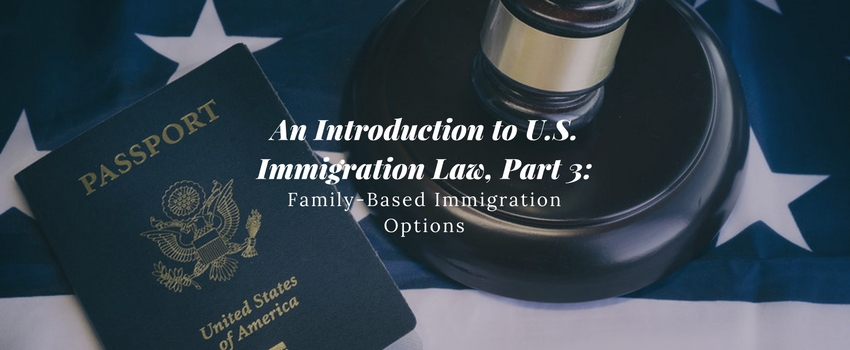
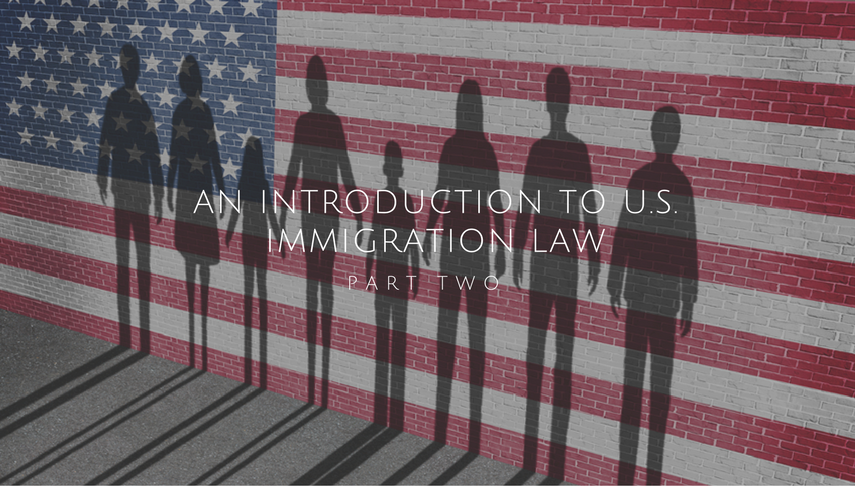
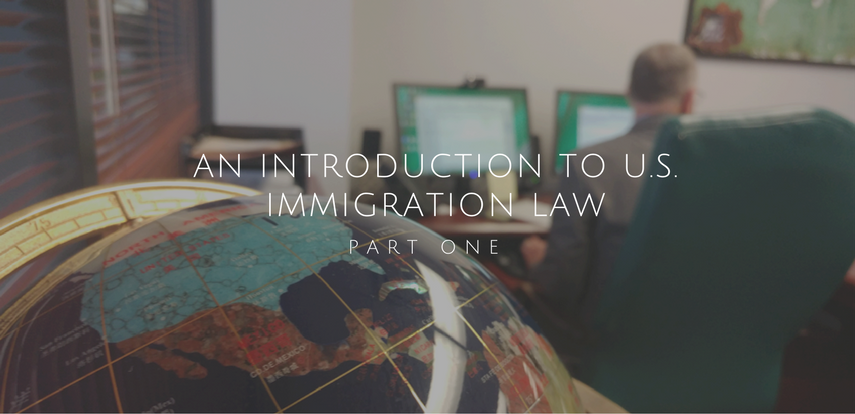
Leave A Comment
You must be logged in to post a comment.